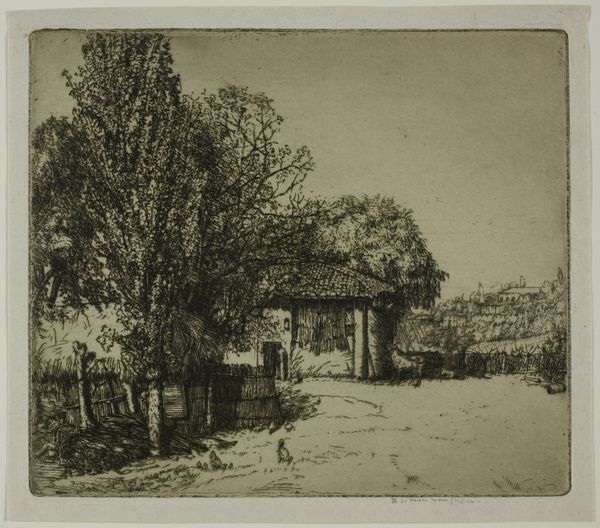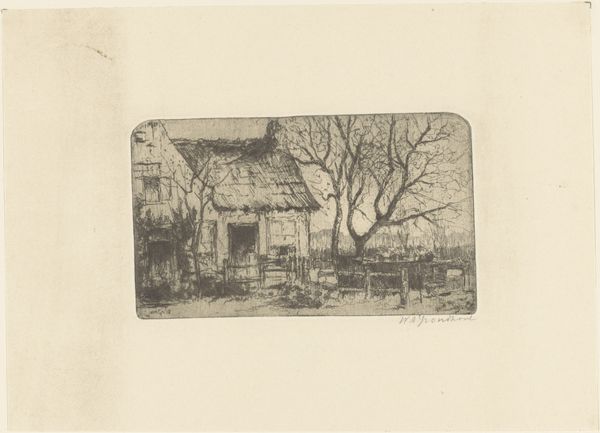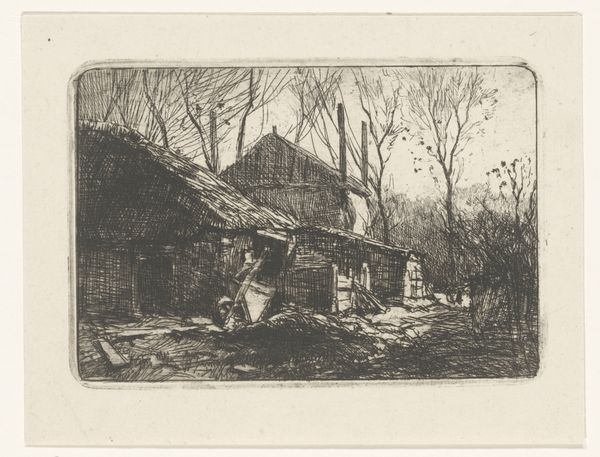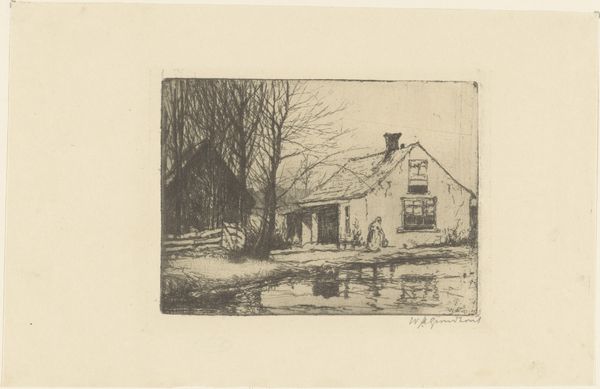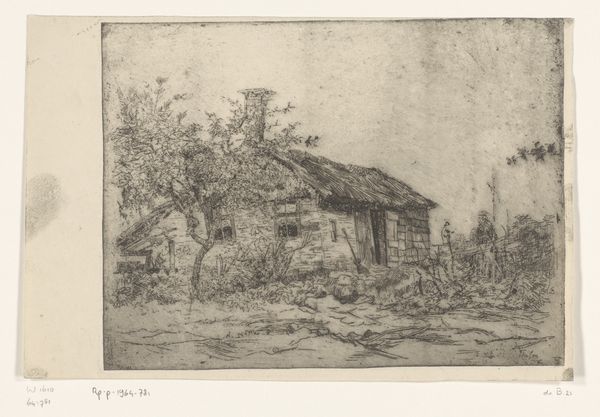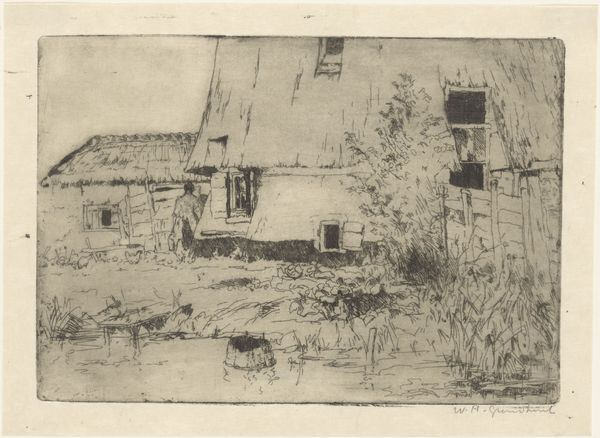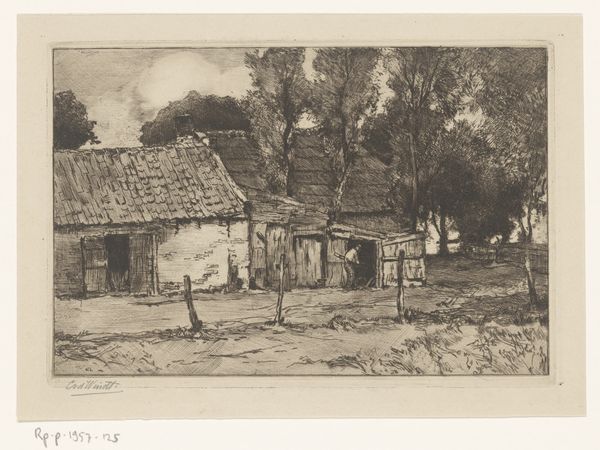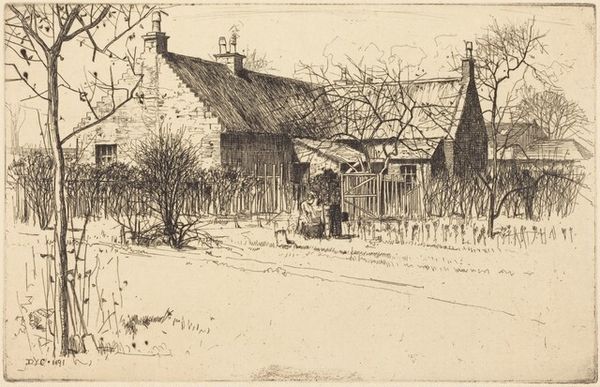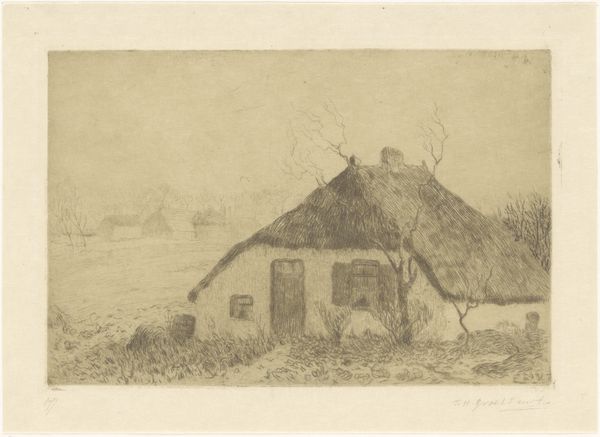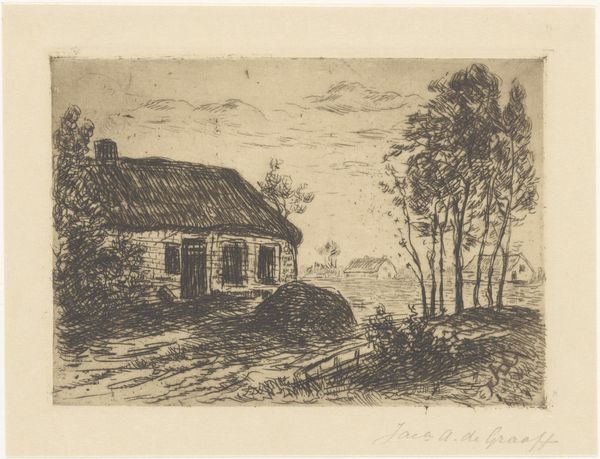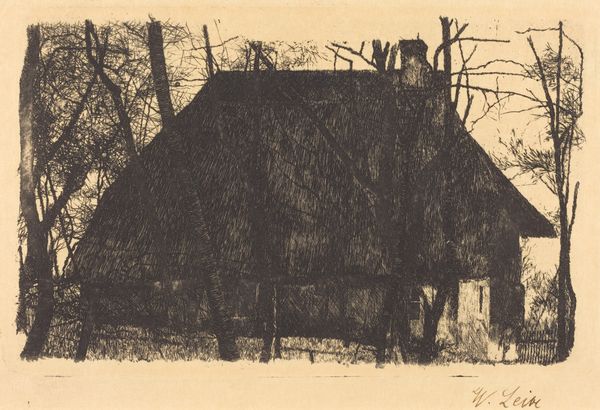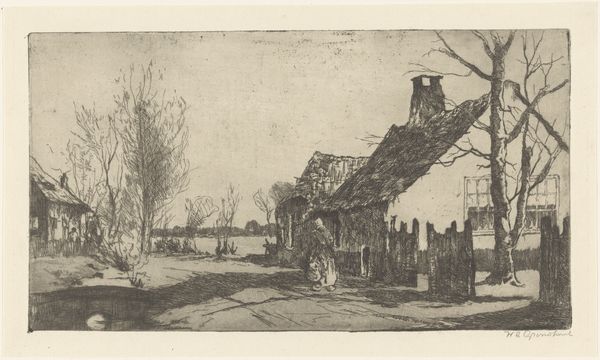
etching
#
etching
#
landscape
#
etching
#
realism
Dimensions: height 94 mm, width 161 mm
Copyright: Rijks Museum: Open Domain
Curator: Willem Adrianus Grondhout created "Bij Veere," an etching that likely dates between 1888 and 1931. Editor: There’s a stark simplicity to the image. It has a quiet, melancholic air. Curator: Consider the historical backdrop: The Netherlands in the late 19th and early 20th centuries were grappling with socio-economic shifts. This scene, in its understated portrayal of rural life, might reflect a yearning for simpler times, before rapid urbanization changed the very landscape and its identity. What appears serene on the surface might, in fact, carry a more profound commentary on labor, land ownership, and the changing dynamics of community. Editor: Let’s look closer at how he captured light with a fairly limited tonal range, focusing on the structural interplay between the thatched roof, the stark trees, and that almost severe-looking cottage. The lines are so carefully laid, creating a textural richness, haven't you observed that? How the light gently grazes surfaces and how he defined spaces with delicate patterns! The etching almost feels like an architectural rendering, yet warmer somehow, with the added visual stimuli. Curator: It prompts questions about the residents, too. How might gender roles play out here, in the domestic space? What sort of work are they likely engaged in? What does this isolated cottage tell us about their social and economic standing in a hierarchical society where urban spaces are fast outpacing their rural counterparts? Editor: While all those themes do undoubtedly interweave with an image like this one, I think focusing too intently on them might obfuscate some of the elemental aspects of its power. Grondhout isn’t just recording; he's curating the tonal structure that creates a certain mood of serenity, or maybe even contemplation. Curator: Precisely, the strength of realism, like we find here, lies in its seeming objectivity but often it subtly champions lived experience—a lived experience far outside mainstream cultural representation and one in which themes of inequality are ever present. It reminds us to consider the forgotten histories interwoven into these settings, and it humanizes people often confined by dominant power narratives to the peripheries of public memory. Editor: I concur with that insight. Curator: Indeed, these types of reflections on place enable us to see, think, and feel anew when experiencing artworks in public collections like this one. Editor: A close consideration of line and tone reveals that beauty can arise from a restrained vision, even when the cultural narrative is one of upheaval and tension.
Comments
No comments
Be the first to comment and join the conversation on the ultimate creative platform.
